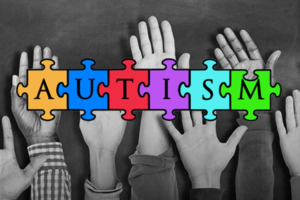Meeting the Needs of Students with Autism Spectrum Disorders (ASD)
Blog
As a teacher, understanding the common characteristics of ASD might help you work with students who may be on the spectrum. Remember that each person is unique and displays a different combination of strengths, weaknesses, behaviors, interests, talents, and skills that they bring to the classroom. Breaking down tasks into understandable components and providing motivational incentives to focus on them are critical elements to keep in mind when trying to teach a person with ASD something new.
According to the Center for Disease Control, the characteristics of ASD are generally noticed by caregivers between 2 and 3 years of age. Some of the most common characteristics of ASD in young children include:
- Not responding to the child’s name by 12 months
- Not pointing at objects to show interest (point at an airplane flying over) by 14 months of age
- Not playing “pretend” games (pretend to “feed” a doll) by the age of 18 months
- Avoiding eye contact and wanting to be alone
- Having trouble understanding other people’s feelings or communicating about their own feelings
- Having delayed speech and language skills
- Repeating or echoing words or phrases over and over (echolalia)
- Repeating actions over and over again
- Being unaware of when people are talking to them
- Preferring not to be held or cuddled or cuddle only when they choose to do so
- Giving unrelated answers to questions
- Getting upset by minor changes or when a routine is changed
- Having obsessive interests
- Flapping their hands, rocking their body, or spinning in circles
- Losing skills they once had (i.e. stop saying words they were using)
- Having unusual reactions to the way things sound, smell, taste, look or feel
It is important to remember that any one of these behaviors can be normal in childhood to a certain degree depending upon the age, the developmental stage of the child and degree of disability of the child.
 Teach & Kids Learn (TKL) provides an online course which provides teachers with effective ways of helping students with ASD reduce stress, develop improved social skills that will allow students to be more successful in the classroom, cope with change, and improve classroom behaviors. Click on the following link for more information.
Teach & Kids Learn (TKL) provides an online course which provides teachers with effective ways of helping students with ASD reduce stress, develop improved social skills that will allow students to be more successful in the classroom, cope with change, and improve classroom behaviors. Click on the following link for more information.
Course: Meeting the Needs of Students with Autism Spectrum Disorder (ASD), Grades K-12
